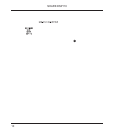
3
SHARK DSP110
1. INTRODUCTION
Thank you very much for expressing your confidence in BEHRINGER products by
purchasing the SHARK DSP110.
+ This manual first describes the terminology used, so that you can fully
understand the DSP110 and its functions. Please read the manual carefully
and keep it for future reference.
1.1 The concept
With the SHARK DSP110 you purchased a device that combines an automatic Feedback
Destroyer using the ingenious search algorithms of our FEEDBACK
DESTROYERPRO DSP1124P, a variable Delay Line (adjustable in msec, feet and
meter), a ULN (Ultra-Low Noise) microphone pre-amp with Phantom Power, an
automatic Noise Gate, a variable Low Cut filter and a Compressorall in one ultra-
rugged and compact case. Still, the SHARK can be operated intuitively and expanded
to a multi-channel system using another four SHARKs and an optionally available 19"
rack mount kit. The SHARKs 24-bit A/D and D/A converters guarantee a precise
reproduction of your program material.
High volume levels and the use of ever more sophisticated monitoring systems with
a multitude of speaker cabinets have led to a greater potential risk of feedback loops
in sound reinforcement systems. So far, audio engineers have been using conventional
1/3-octave equalizers to suppress unwanted feedback. However, the individual filters
of such an EQ, with their relatively wide bandwidth, have quite an impact on the sound
image. With the BEHRINGER SHARK (minimum bandwidth: 1/60 of an octave) you
are now free to either choose the trial and error method to suppress feedback with
graphic equalizers, or to assign this task to the DSP110, so that you can give your
music your undivided attention. Using extremely narrow-bandwidth filters, the
SHARKDSP110 eliminates only unwanted feedback, without affecting your music.
1. INTRODUCTION


















